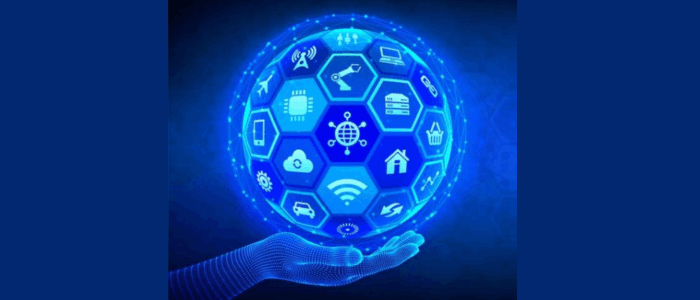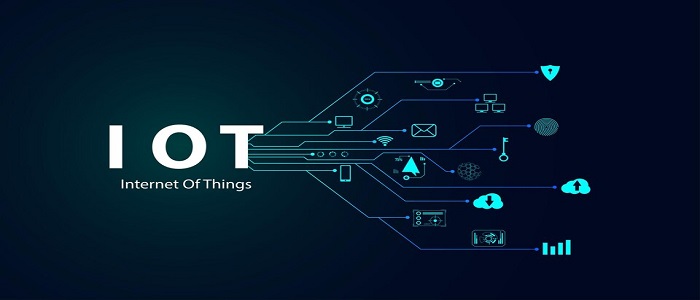
Striking a Balance between Innovation and Security in the Age of IoT
As the world thrives on connectivity, the Internet of Things (IoT) is emerging as a pillar of modern innovation and security. As our devices, homes, and industries intertwine in the digital carpet, the promises of improved convenience, efficiency, and productivity are inviting us forward.
Imagine a world where our homes adjust to our preferences autonomously, where industries optimize their operations through real-time data insights, and where the very fabric of daily life is seamlessly woven with technological marvels. IoT heralds an era of intelligence and connectivity, in which the limits of what can be achieved are pushed further than ever.
However, as the dazzling world of IoT unfolds, so too do the challenges. The convenience brought by interconnected devices is shadowed by concerns about data security, privacy breaches, and the potential for cyber threats. As we embrace the boundless potential of innovation, the need for a robust security framework becomes non-negotiable.
This exploration embarks on a journey through the heart of IoT’s transformative potential and its inherent security intricacies. It is at the intersection of innovation and security that the narrative of the IoT era truly unfolds. How can we strike the delicate balance between embracing groundbreaking progress and ensuring that our digital lives remain shielded from emerging risks?
In the blog, we delve deep into the dynamics that define the Age of IoT. We will unravel strategies, best practices, and forward-thinking insights that enable us to embrace innovation without compromising on security. Together, we will decipher the outlines of the IoT landscape, where the coexistence of innovation and security will pave the way for a better and more connected future.
Understanding the Internet of Things (IoT)

The heart of this narrative lies in understanding the Internet of Things – a network that strings together objects, sensors, and devices, creating an intricate tapestry of connectivity. Imagine a world where your morning routine is seamlessly orchestrated: your coffee brews as your alarm goes off, and your car warms up as you finish breakfast. This is the world IoT envisions, where devices become conduits for convenience and automation.
Ordinary objects now have the capacity to establish connections with the virtual domain, empowering them to communicate consistently. For instance, consider the synchrony between your fitness tracking watch and smartphone, harmonizing data flow for tasks as diverse as booking a medical appointment or charting fitness milestones.
The possibilities of IoT are far-reaching, promising elevated efficiency and convenience. Yet, as is often the case with groundbreaking technologies, IoT carries its share of security risks. These vulnerabilities stem from the sensitive personal data IoT devices amass, such as health records, and their propensity to interconnect with other devices—think of your home’s thermostat. This interdependence implies that a breach in one device could cascade to compromise other networked components.
There must be a delicate balance struck between the drive for innovation and security. On one hand, it’s essential to encourage enterprises to craft inventive IoT products and services. Conversely, the safeguarding of personal data demands that these innovations adhere to robust security protocols. Fortuitously, both companies and individuals can adopt measures to heighten security for IoT devices.
The Significance of Cybersecurity
Beneath the surface, however, lies the imperative of cybersecurity. It’s the padlock on your digital front door, ensuring that your data remains yours alone. Cybersecurity isn’t a luxury but a necessity, especially as IoT expands its reach. With devices constantly exchanging information, the need to shield this data from prying eyes is more critical than ever. It’s the digital fortress that thwarts the arrows of hackers and preserves the integrity of our personal space.
Though complete immunity from cyberattacks remains elusive, prudent actions can diminish the risk of becoming prey:
1. Regular software updates and swift installation of security patches fortify individual defenses.
2. Robust security measures must be deployed across operating systems, web browsers, and software programs to thwart emerging security loopholes.
3. A paramount step involves the cultivation of strong, intricate passwords that thwart unauthorized access.
The Intersection: IoT and Cybersecurity
At the intersection of innovation and security, a delicate balance is struck. Rather than being adversaries, IoT and cybersecurity can be allies, each enhancing the other. Consider IoT as a painter’s brush and cybersecurity as the canvas – together, they create a masterpiece. Innovations like biometric authentication and encrypted data transmission empower IoT devices, ensuring that Convenience is underpinned by an unbreakable shield of security.
Fortuitously, both manufacturers and consumers hold the key to enhancing IoT cybersecurity:
- Manufacturers must engrain security elements such as encryption and authentication into the very DNA of their devices.
- Consumers, on their part, must be conscious of IoT-associated risks and adopt protective measures, from robust passwords to consistent software updates.
A nuanced comprehension of the interaction between IoT and cybersecurity can foster a fortified digital milieu.
IoT’s Impact on Cybersecurity Challenges

However, this balance is not without its challenges. The proliferation of IoT devices also presents an expanded attack surface for cybercriminals. Vulnerabilities emerge as devices communicate, potentially opening doors to unauthorized access. The challenge is to identify and address these vulnerabilities while embracing the benefits of interconnectedness.
Addressing IoT Cybersecurity Challenges
Meeting these challenges head-on requires a multi-pronged approach. Encryption becomes the lock and key, securing data as it travels between devices. Rigorous authentication mechanisms prevent unauthorized entry, ensuring that only trusted sources can access sensitive information. The ever-evolving landscape demands continuous vigilance, where patches and updates are the tools that fortify the digital bastion against emerging threats.
In navigating this complex terrain, organizations can adopt a series of strategic steps to address IoT cybersecurity challenges:
- Devices must be outfitted with airtight authentication protocols and contemporary security software to thwart potential attacks.
- Network segmentation assumes paramount importance, insulating devices and minimizing the contagion of breaches.
- Vigilance necessitates comprehensive traffic monitoring, expediting identifying and counteracting abnormal activities.
Looking Ahead: The Future of IoT and Cybersecurity
Peering into the horizon, we glimpse a future where innovation and security stand hand in hand. Artificial intelligence emerges as the sentinel of tomorrow, using advanced algorithms to predict and prevent cyber threats. With the collective wisdom of humanity, a digital ethos of safety is established, ensuring that innovation doesn’t come at the cost of security.
Anticipated developments in the domain of IoT and cybersecurity encompass:
1. An unceasing surge in the number of connected devices, a phenomenon attaining exponential momentum.
2. The proliferation of diverse device types within the IoT ambit—ranging from automobiles and household appliances to medical equipment and industrial machinery.
3. The inescapable escalation of security risks parallel to the burgeoning array of interconnected devices obliges hackers to innovate new modes of exploitation.
4. A burgeoning demand for security solutions that proffer robust protection without compromising user experience or operational efficiency.
5. Heightened concerns around data privacy as IoT devices continue to amass voluminous data. This impels consumers to assert their rights to data transparency and governance.
In the symphony of progress, where innovation’s melody harmonizes with security’s steadfast rhythm, a balance is struck. IoT transforms our lives, while cybersecurity preserves our digital sanctuaries. Like a skilled tightrope walker, we navigate the delicate tension between the two, embracing innovation’s wonder while cherishing the refuge of security. As we move forward, let’s remember that the move between innovation and security is not a struggle but a duet – one that sings the song of progress while keeping our digital world safe.
In the age of the Internet of Things (IoT), where innovation blooms like wildflowers in spring, security stands as the firm ground that nurtures their growth. With each technological leap, may we leap with equal fervor toward safeguarding our digital dreams.
